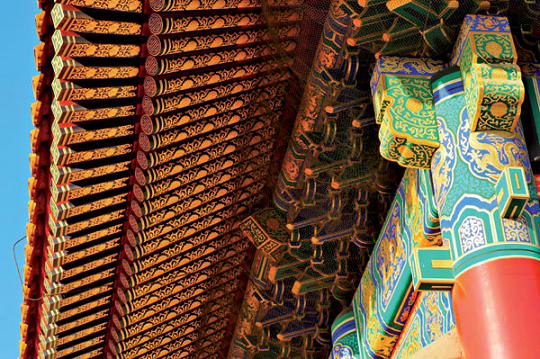
 |
| The eaves of a building at the Forbidden City feature colorful painting on the beams, lintels and ceilings. (China Daily) |
The rich detailing on China's ancient architecture is becoming a lost art. Deng Zhangyu sits down with a master craftsman amid his sketching pencils and vivid paints.
It's easy to find colorful painting on the beams, pillars, lintels and ceilings of ancient Chinese architecture, especially in imperial palaces. For Wang Zhongjie, a 79-year-old Beijing native, his life is intertwined with these rich strokes of gold, blue and red.
Sitting in his small bedroom with a century-old bed, a bookcase full of materials on painting and a shabby desk, the gray-haired senior keeps drawing various patterns for his art every day. It's been his life for years, even now when he struggles with an atrophic kidney. Unlike the young, accustomed to painting on computers, Wang persists in creating every pattern by hand on paper.
Wang calls himself a surgeon of color painting. In his friends' words, he takes the work so seriously that he makes it into a science - painting with detailed statistics based on his fieldwork.
"I want to make clear the DNA of every pattern drawn in different dynasties," says Wang.
From craftsman to designer to appraiser, Wang has devoted more than 60 years to repairing color painting on Chinese ancient architecture.
After primary school, Wang gave up his studies because of poverty. He became a craftsman, drawing and repairing color paintings at the age of 13, using skills that had been passed down from his grandfather to his father and then to him.
In 1956, Wang was recruited by the Institute of China Antique and Culture Heritage to take up research work on color painting across China.

















 Photos: A hard and happy day of a 'gold' confinement
Photos: A hard and happy day of a 'gold' confinement


![]()
